
Avinash Kumar tells me that, in Tamil, Antariksha means the universe and Sanchar means travel. He lives in Goa — "in the middle of India, on the beach." He's a designer, a researcher, the co-founder of a design studio called Quicksand, and he is also the driving force behind the most mind-blowing game concept art I've ever seen.
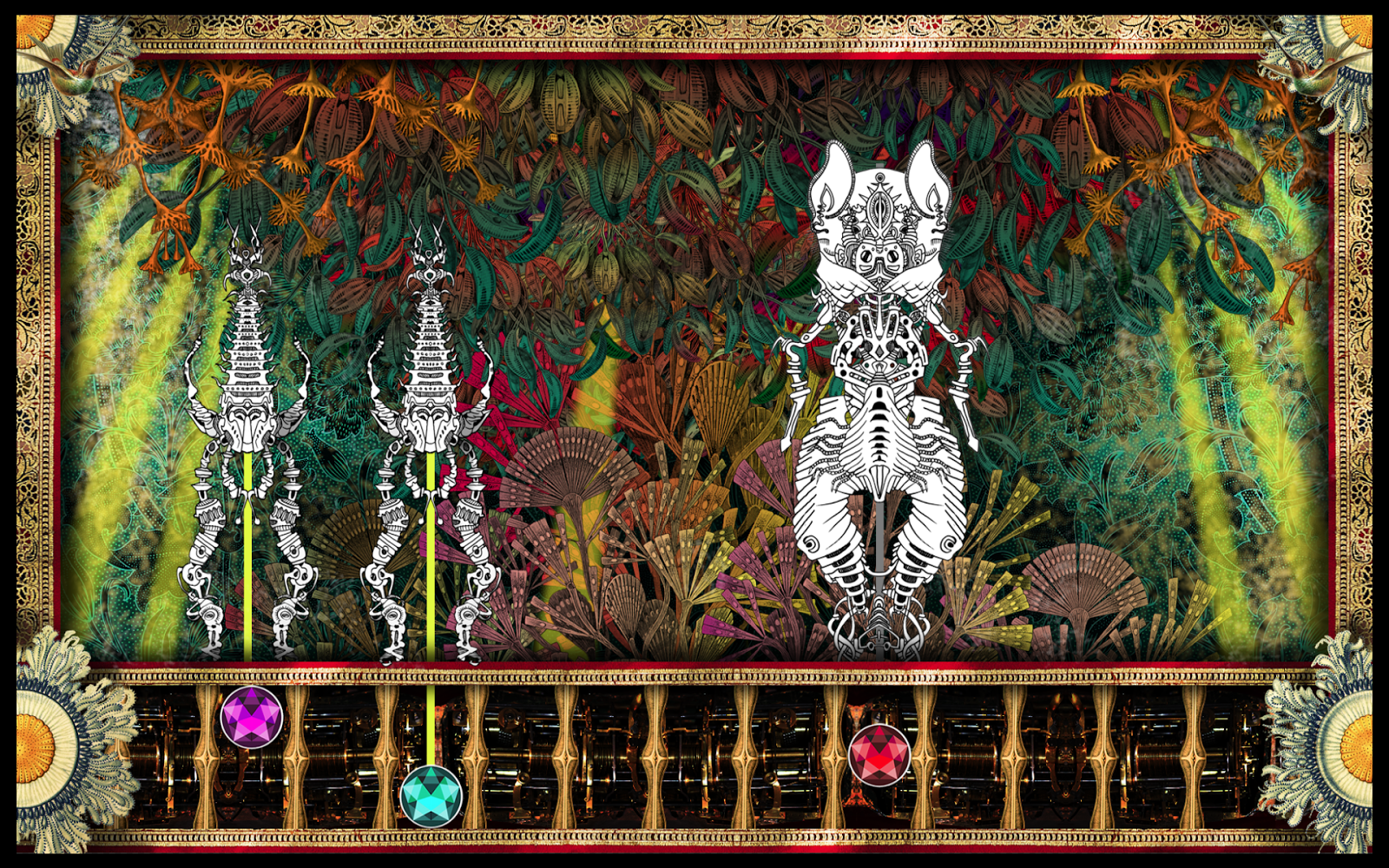
Just one piece of concept art from Antariksha Sanchar
“The game itself has a non-traditional origin," says Kumar. "In 2007, I started VJing — getting into doing visuals for live music performance. I was part of a DJ/VJ collective called BLOT, Basic Love Of Things. But this project is — for me — unique, in that I get a chance to work on a performance with my mom, who’s been a classical Indian dancer for more than 50 years."
Almost a decade ago, BLOT started to develop a real-time visuals that went along with Kumar's mom's performances. In 2012, his mom did an hour-long dance performance exploring the history and mythology of flight. The UK consulate then attended a conference Kumar co-organized, saw the flight-themed performance, and ended up giving them a small grant to explore games, and then the whole situation turned into a psychedelic steampunk transmedia dance + game about a late-1800s South Indian mathematician who goes to Mars.

Kumar's mom and others dance beneath a prototype spaceship

As part of the game development, Kumar and his team have made a number of virtual reality objects
The game's main character is inspired by a real-life Indian mathematician, Srinivasa Ramanujan, a prodigy born in the late 1800s. Though he grew up in a pre-independence small town and had little formal education, Ramanujan sent a letter to Cambridge in his late teens and reached a professor who invited him to visit. Ramanujan died early, in his 30s, yet he had already produced a significant body of work.
"For Ramanujan, math was a form of spirituality, a conversation with God," says Kumar. "He would dream theorems and wake up and write them down. So our story in Antariksha Sanchar connects the rational world of math with the world of dreams.”
After the mathematician died, three of his diaries were found in Cambridge — “the lost diaries of Ramanujan,” says Kumar, "in which were some of his most important theorems." So, of course: Antariksha Sanchar has concept art for the diaries.
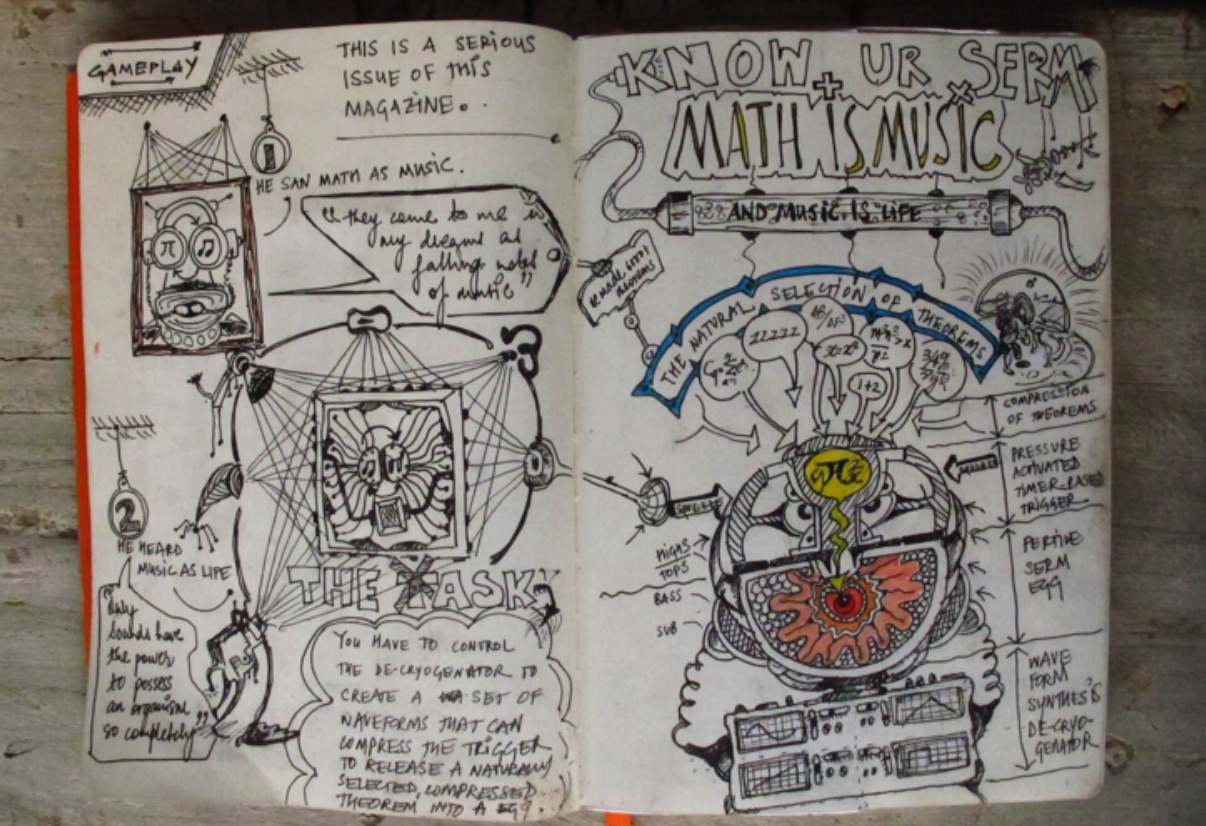
The game connects Ramanujan's lost math diaries to the world of dreams
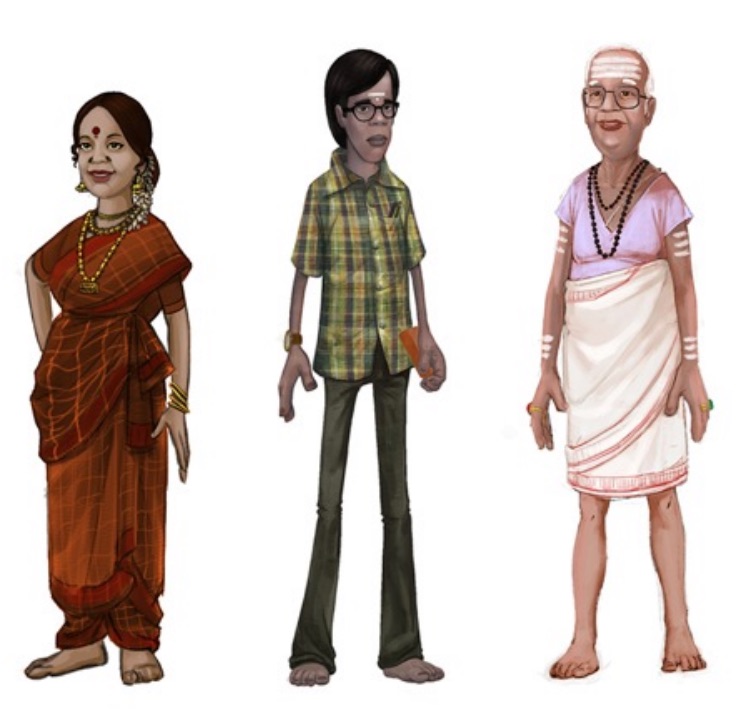
This is Ramanujan, the game's main character, with his mother and grandfather
Importantly, “we didn’t just want to make a game around math, we wanted to make a game around Indian culture,” Kumar explains. "We wanted to tell a story that moved away from the classic male protagonist who does everything on his own, and emphasize his relationship with different generations of his family. So it’s him, his mom, and his grandfather who are the main characters. We wanted to include everyday people in India as protagonists."
Remember how Kumar co-runs a design agency day-to-day? A lot of the work they do is ethnographic and sociological, he says. So naturally, “we had a pretty ethnographic, anthropological approach to the concept art for this game.”

In the game, Ramanujan's character feels guilty about the time his mom spends grinding spices to cook. So the game might include an adventure where you, the player, build a machine to help her grind
As part of their exploration of South Indian culture, Kumar says, his team wants to include real temple ideas from the real India... while also blending them with fantasy and exploring an “Indian cultural origin of steampunk” that they call Tamilpunk.
This means: amazing Tamil-robot-temple art.

Robot hands in the temple garden
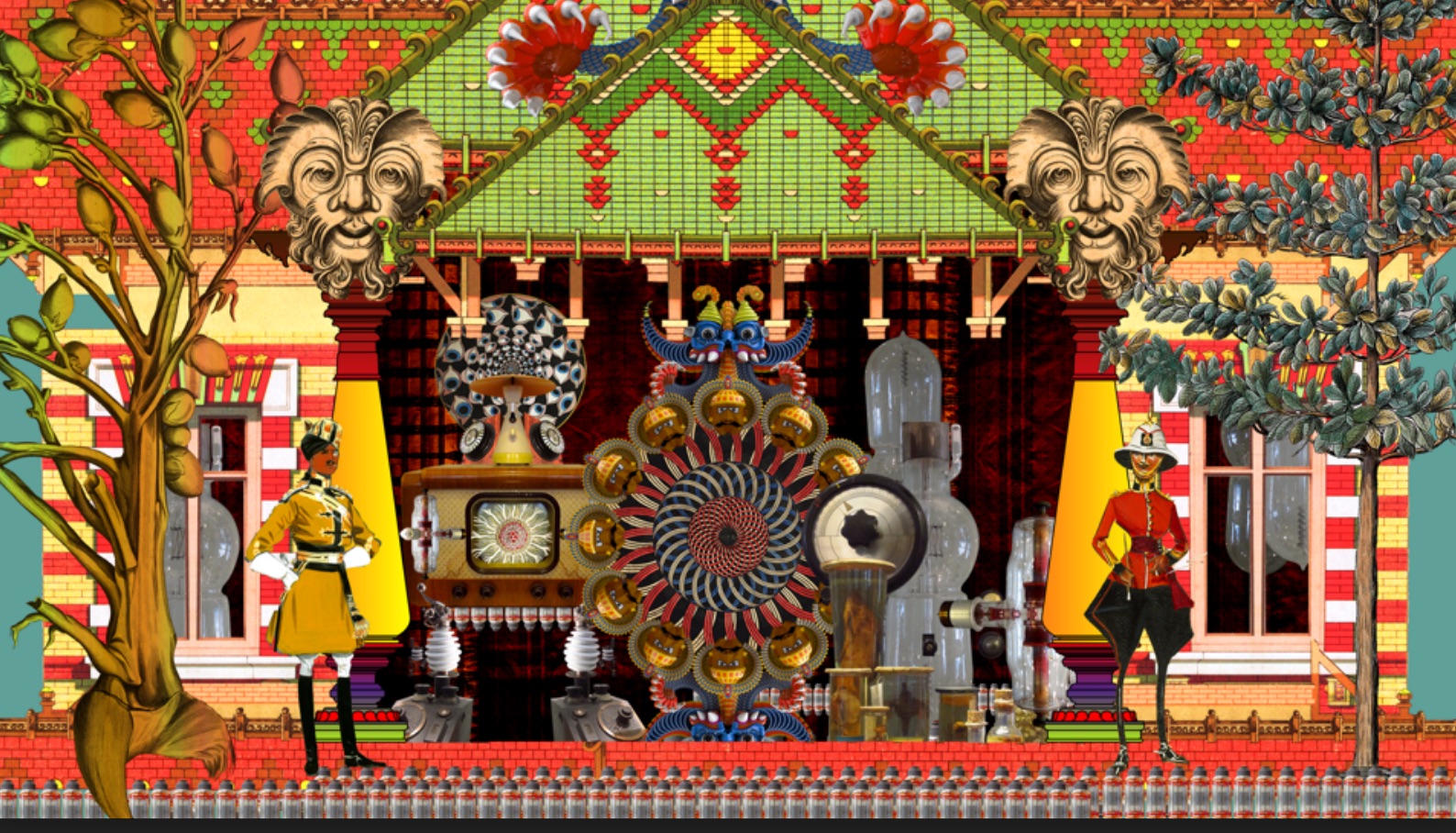
More!
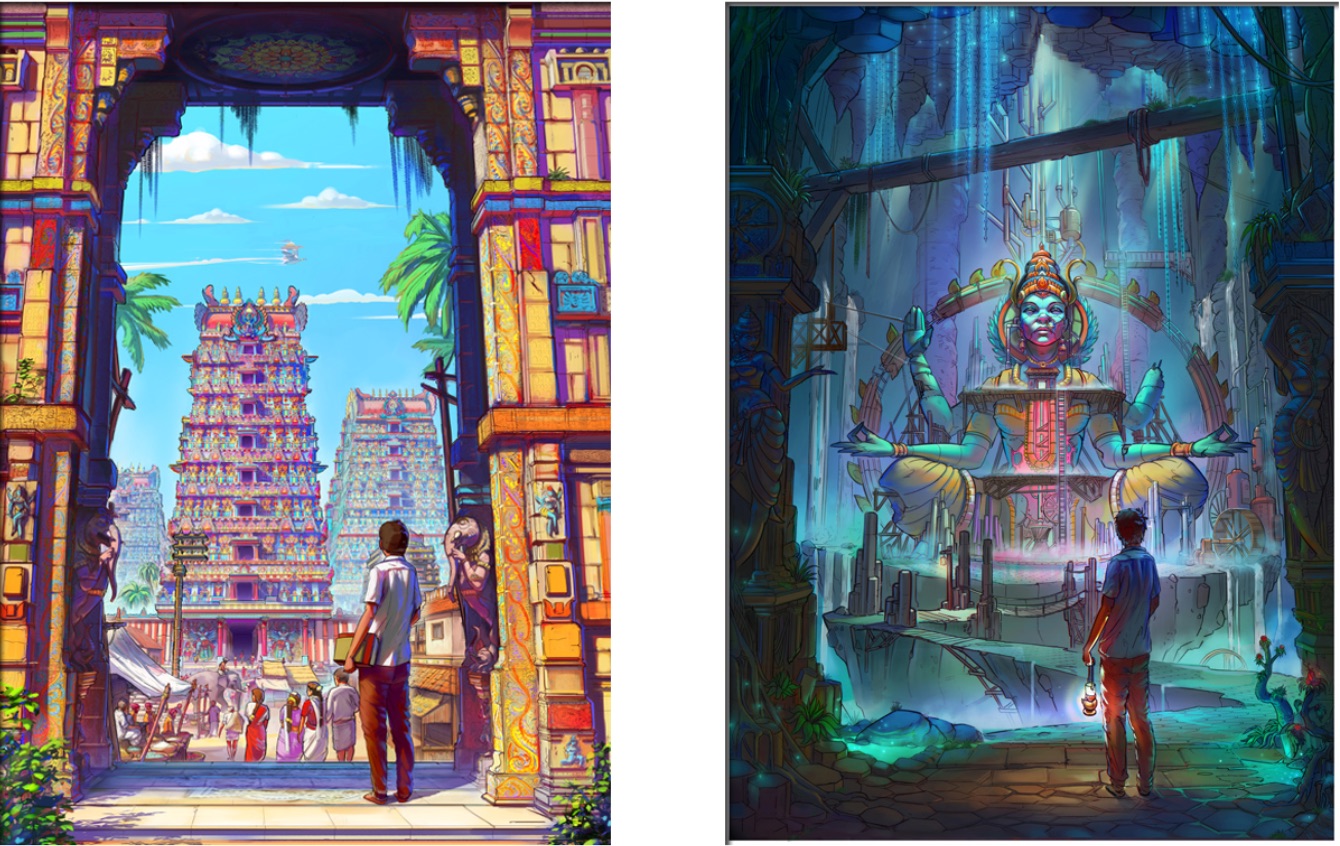
I must go to this underground Tamilpunk temple complex
The game's characters live in a South Indian town right next to a temple complex. They worship the goddess of the temple — and indeed, she’s the one responsible for the dream world where Ramanujan gets his mathematical inspiration.
There is an emerging alt-right in India, says Kumar, and it's very focused on organized religion. So, partly in response to that, the art of Antariksha Sanchar is “trying to think about re-positioning religious culture visually, so it’s taken more towards a pre-religion point in time where the people of the community were worshipping nature.”
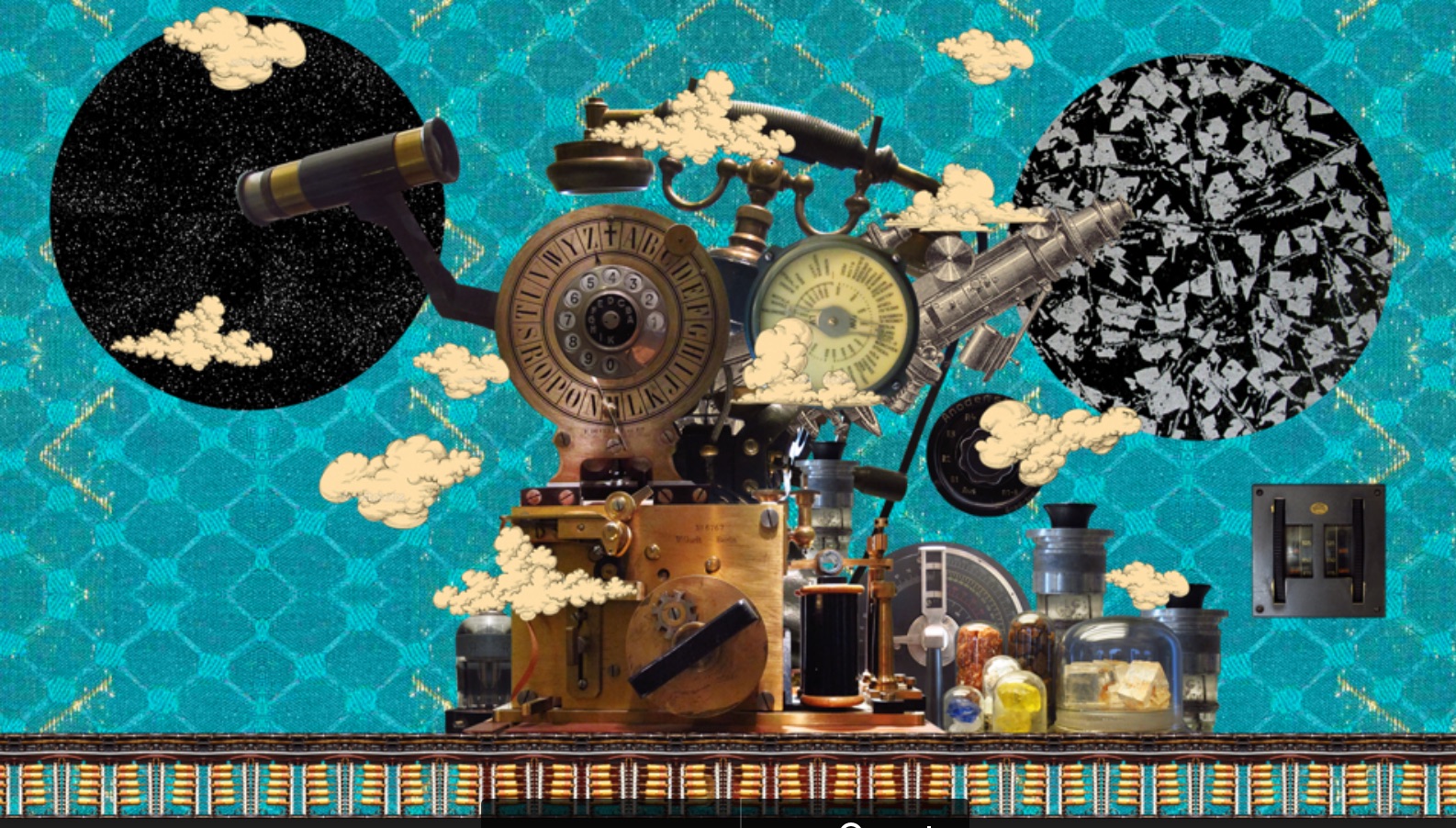
This is a machine that Ramanujan built to engage more effectively with his goddess temple dreams
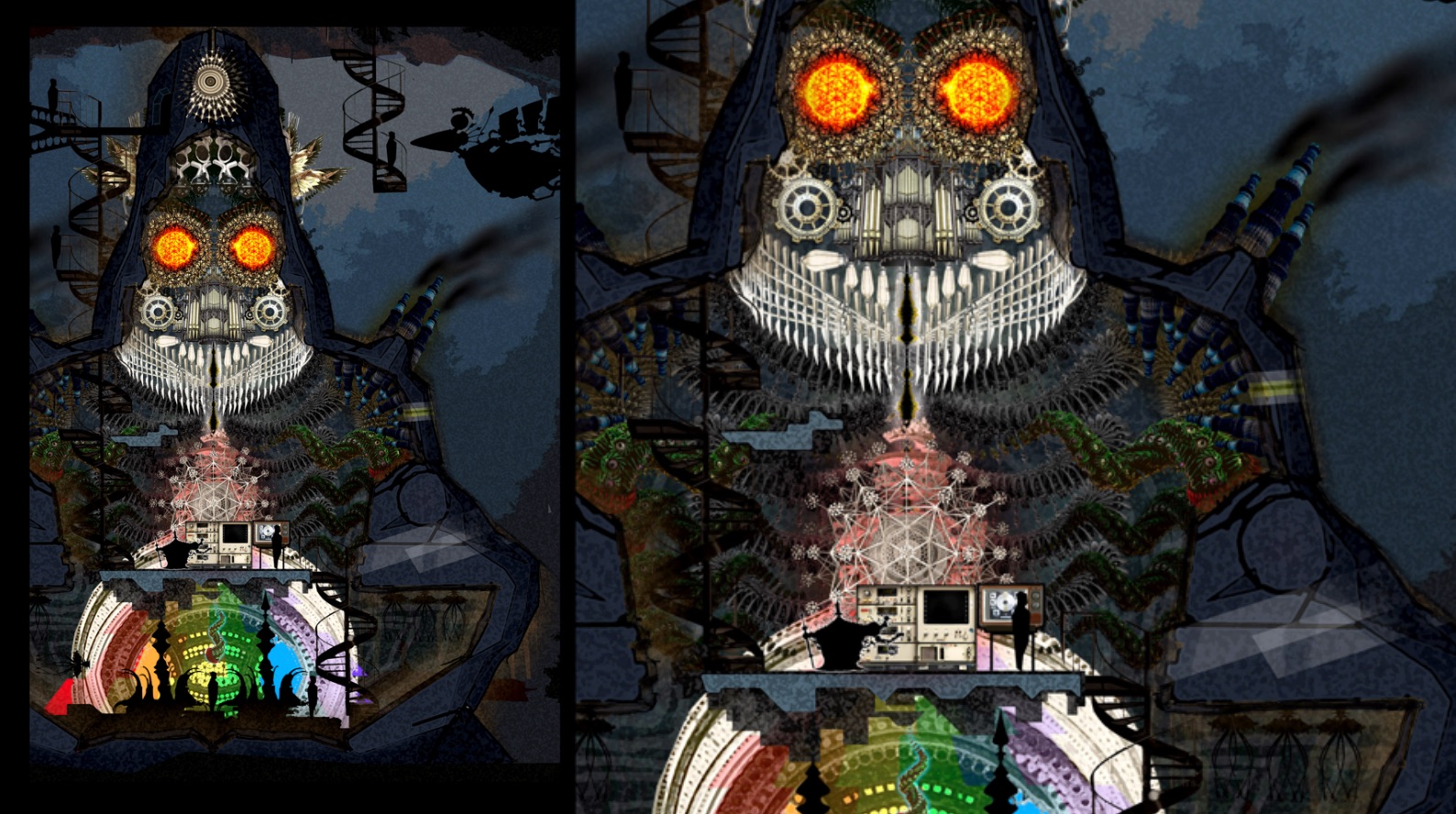
Also, this.
“How do you take a culture as diverse as Indian culture and express its richness?” asks Kumar. How, indeed?
The Antariksha Sanchar answer is: when museums started releasing their Indian collections into the digital public domain, the team made collages of the material.
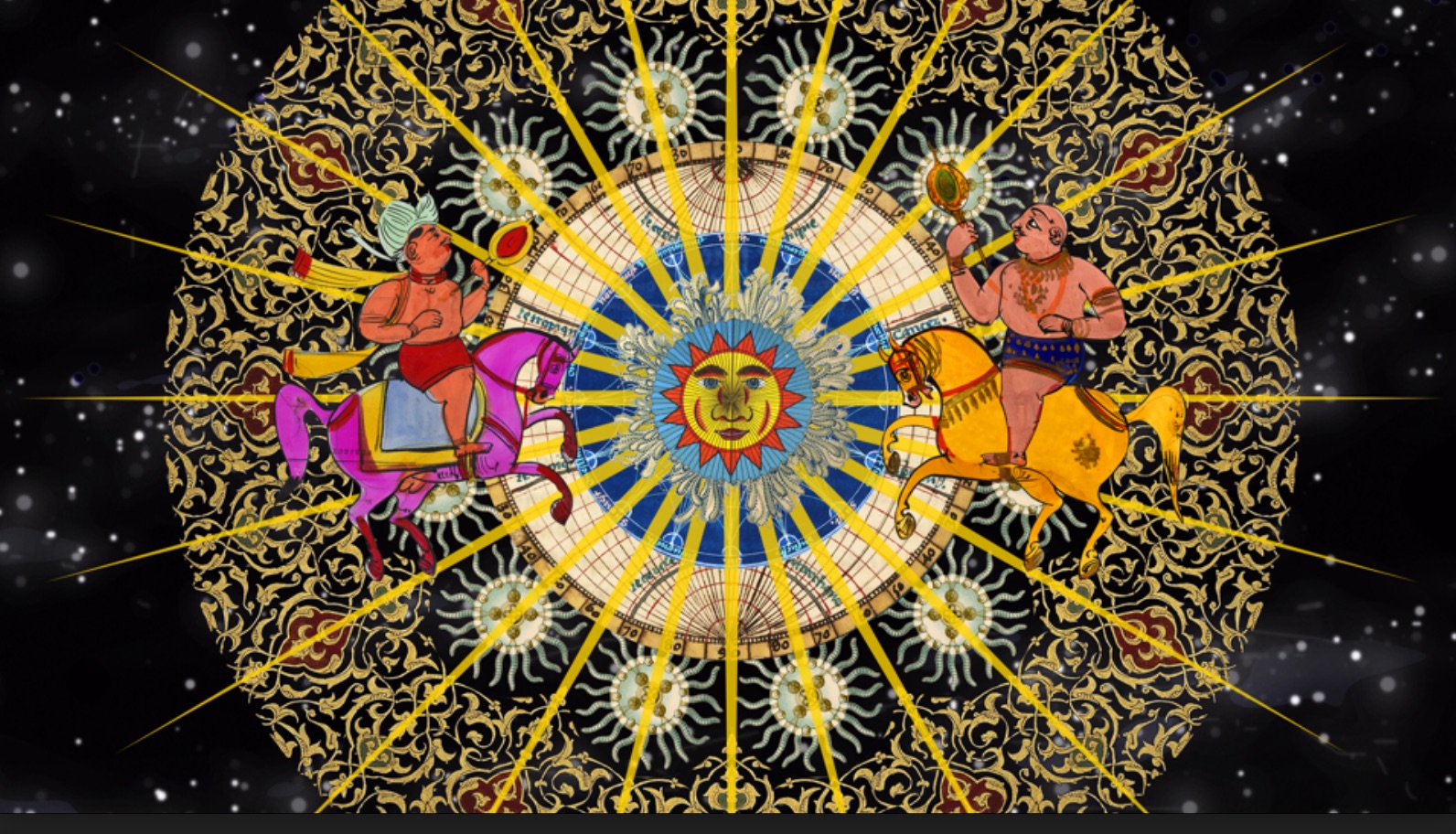
“A big part of the project is also about trying to understand how videogames could be used to preserve or understand cultural heritage," says Kumar.
Kumar grew up reading old pulp science fiction, so this, too, informs the machines that Ramanujan is building to go to other planets in the game. “A lot of this stuff also reflects the crossover of those of us who grow up with one foot in the West and one foot in the East," Kumar muses, as he shows me the Western-style pulp illustrations.
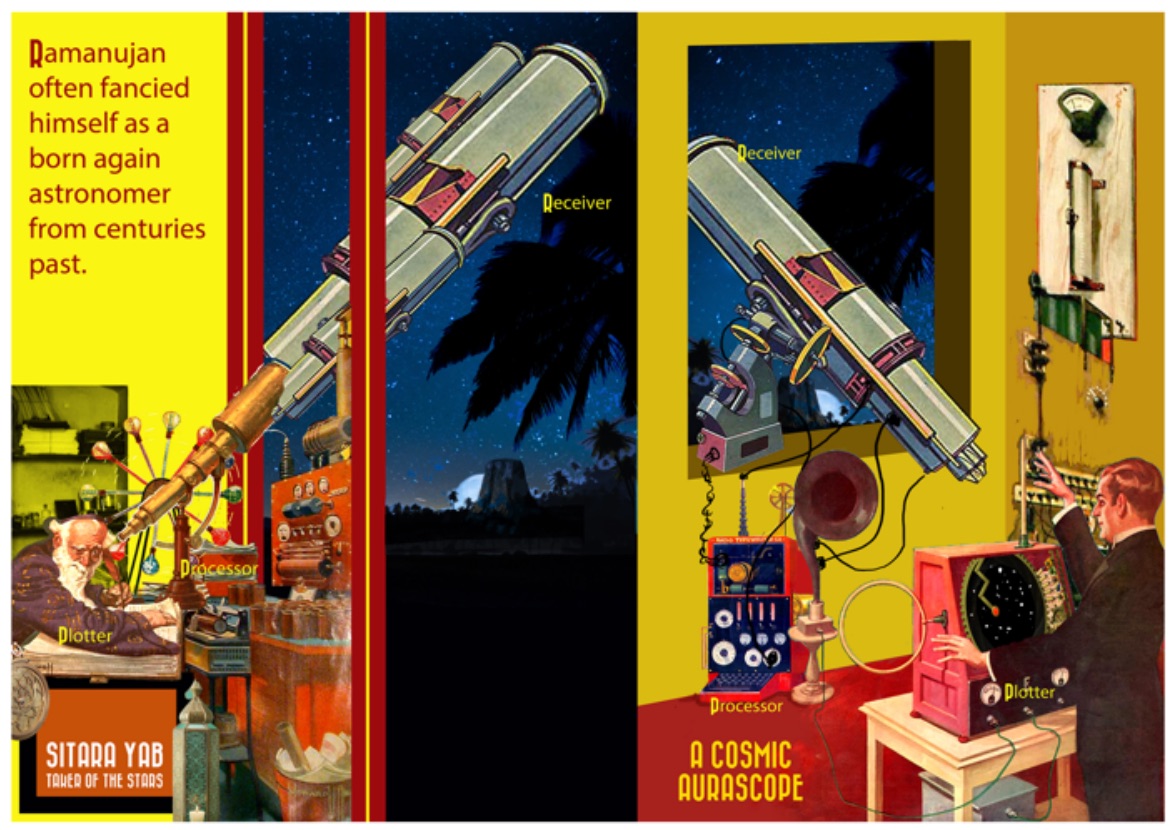
I want a "cosmic aurascope" real bad
This year, Kumar did another performance with his mom where she danced and he created the visuals. In the end, “it’s still my dream to have my mom be part of the project and do a performance with her," he says. "The Antariksha Sanchar team is looking at mudras and languages of dance communication and trying to figure out if the dance could be part of the game, too. Maybe in the game, you can learn dance languages to communicate with extraterrestrials?"
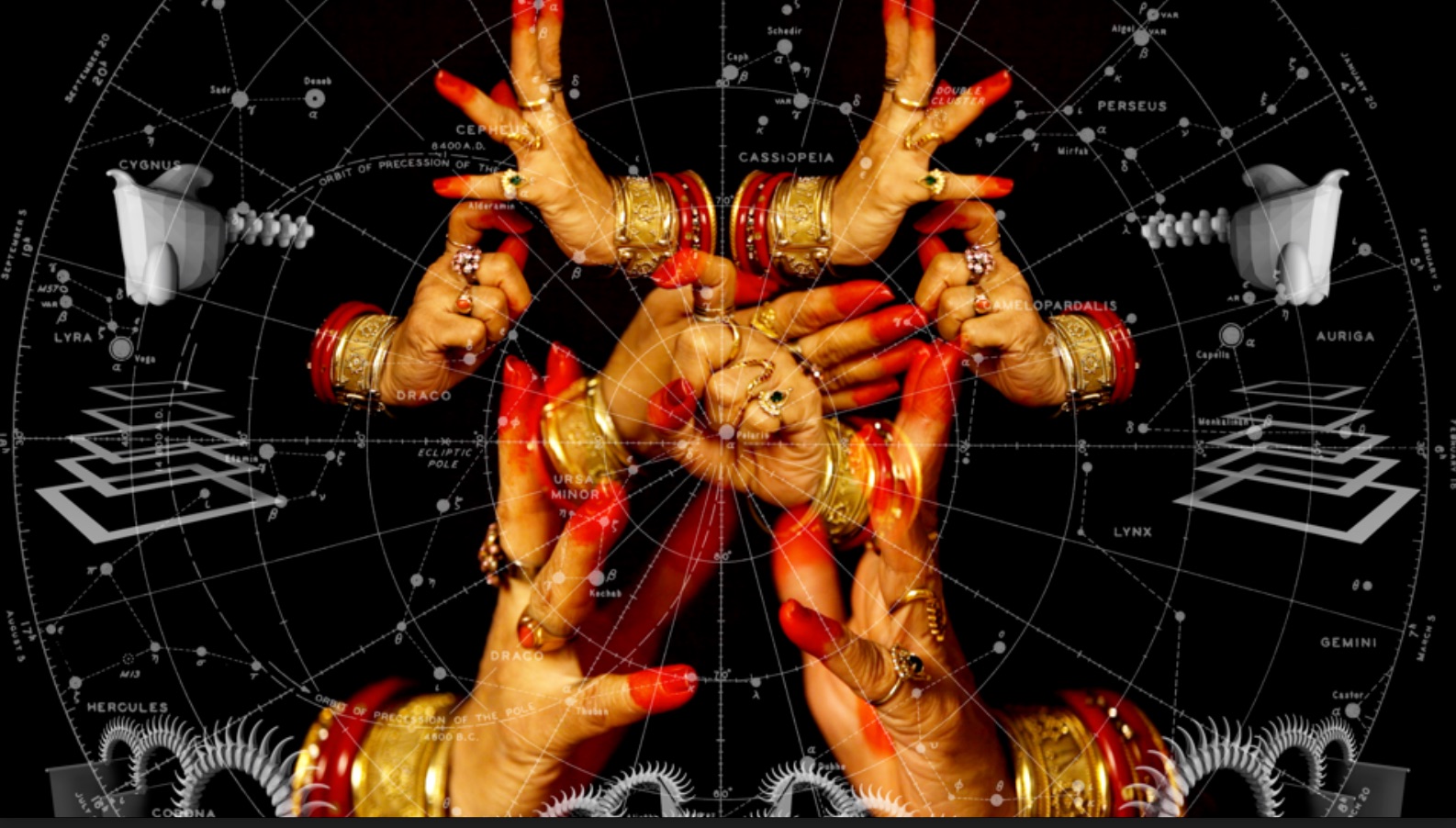
Sign me up for a South Indian space dance language class
Most importantly, says Kumar, the team wants to use the game to "explore philosophy, ethics, and virtues."
That authenticity comes through loud and clear, both in our conversation and in the art itself. Indeed, my favorite image out of all of these might be the first one, with the beautifully sincere text that says: "A speculative science fiction adventure inspired by the vibrant cultures of South India, created earnestly to celebrate the independent exploration of our Universe."
Transparency Notes
This was written by Lydia Laurenson, editor in chief of The New Modality. She did no fact-checking for this story, except to make sure that Srinivasa Ramanujan really existed in historical record. There's more about our transparency process at our page about truth and transparency at The New Modality.

